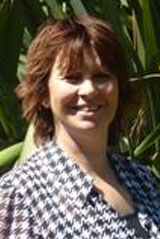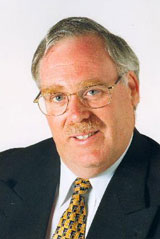 |
|
 |
National Health IT Board Director - Graeme Osborne
As we wind down 2014 for our summer break, it is worth reflecting on both the focus for 2015 as well as the achievements of the past year.
A new five-year plan being developed by the National Health IT Board (NHITB) will continue to provide direction on foundation initiatives including regional information platforms, patient portals, telehealth and clinical pathways. It will focus on enabling access to trusted information, supporting new and improved models of care, and moving towards personalised healthcare. A draft is due to be released in March 2015 for your input and is expected to be finalised by June 2015.
|
There are numerous examples of health IT sector success, such as the rollout of one clinical workstation for the South Island. I will briefly mention four others.
- The growing uptake and acceptance of patient portals means that over 37,000 patients from 96 general practices have registered for a patient portal. The feedback from patients, who can access their information, and from their GPs, has been overwhelmingly positive. They do not want to go back to traditional models of care.
- The new Maternity Clinical Information System (MCIS) is a secure online system which brings together all the information collected on different systems in hospitals and in the community is now live in several DHBs. This is an excellent example of sector collaboration. The system has been developed jointly with the colleges of midwives, GPs and obstetricians and gynecologists and the Ministry of Health, the NHITB and DHBs.
- Telehealth initiatives, led by clinicians, are continuing to grow so that the sector can improve health services delivery to people in remote places. On our website are numerous examples of how successful this is, from teledermatology virtual lesion clinics to being used to monitor TB outpatients’ medications.
- Other highly successful initiatives were demonstrated at Health Informatics New Zealand (HINZ) conference in Auckland in November and in the high interest generated by this year’s Clinicians’ Challenge. I am impressed by the innovative thinking going on by clinicians, such as the winner Dr Tom Morton, around New Zealand who are eager to find practical solutions to everyday work-related issues.
As always, I would like to thank Dr Murray Milner, members of the NHITB Board, the Consumer Panel and the National Information Clinical Leadership Group for their guidance and input to the NHITB’s work of the past year.
Thank you also for your contributions to helping make our health sector better each year. I wish you all a very happy and peaceful holiday season.
Graeme Osborne
|
 |
 |
 |
National Health IT Board - Chair, Murray Milner
As 2014 comes to a close, we can now assess where we have landed with our eHealth vision as established in 2010, which states that:
To achieve high quality health care and improve patient safety, by 2014 New Zealanders will have a core set of personal health information available electronically to them and their treatment providers regardless of the setting as they access health services.
We have not been fully successful in delivering on this objective, which is disappointing. We always knew this was going to be a stretch goal, and it has definitely proven to be so. On the other hand, we are well on the way to achieving this objective, and where it has been achieved, both patients and their clinicians are pleased with the results. During 2015, with the help of some special funding, we will be striving to achieve more universal completion of this objective.
During 2014 we have had to acknowledge that getting universal adoption of any initiative throughout the health system is always a challenge. During 2015, this will be an area of increased focus.
We need to complete the initiatives we have commenced across the sector and ensure that the benefits as expected are being achieved. We are seeing too many poor implementations of projects that do not properly support the new models of care they are intended to enable, and hence the benefits are not fully realised. We must ensure that every dollar invested in ICT capability across the sector delivers the benefits intended.
During the year we have seen some excellent progress on some of the enablers for the delivery of improved healthcare for New Zealanders in the future. I have been delighted to see the progress that has been made across the sector on Telehealth initiatives under the expert leadership of the Telehealth Forum in their annual stocktake. This has been one of the very positive stories for the year. This outcome has also been supported by some new HISO standards which help to enable improved interoperability between different videoconference suppliers. These technologies are definitely starting to come to the fore in supporting new models of care, which are both efficient and effective for patients and their clinicians.
Towards the middle of 2015 the NHITB aims to deliver a new strategic plan for the development of ICT across the sector through to 2020. This will build off the foundation stones embedded over the last four years, but will map out the way forward for health informatics excellence across the sector. It will include 3 core themes that:
- Complete the foundations for patient centred information management across the sector to enable consumer empowerment and self-directed care.
- Support health workforce development, clinical decision support, and multi-disciplinary teams to support care closer to home.
- Deliver greater access to data, information and knowledge in order to support evidence based care options and quality improvement.
Over the next few months people across the sector will be invited to provide their thoughts on the future of information enabled healthcare delivery to include within the plan, and we welcome your input.
In the meantime, after such a busy year, we will all be looking forward to a relaxing festive season in preparation for the year ahead. The National Health IT Board and the eHealth team look forward to working with you all in the New Year, and so I will take this opportunity to wish all of you a safe and joyous Christmas holiday break with your friends and family.
Murray Milner
|
 |
 |
 |
National Information Clinical Leaders Group (NICLG) - Chair, Peter Gow
Leadership is the art of inspiring others to aim for and achieve shared aspirations. NICLG leaders shared aspirations include healthy lives for all New Zealanders. A recent Medical Council newsletter item on the Code of Ethics described the principle of autonomy as "the right of the patient to make decisions for
themselves".
Informed decisions require patients to be welcomed to partner with health professionals and their clinical records, assisted by patient access to their health information and the development of shared care plans to address those issues identified by them as important. As good patient experience is closely aligned to a positive health professional experience, discussion about Health IT systems that need to be easy to use and link seamlessly with each other feature prominently within NICLG agendas.
Regional updates, with improved two way feedback about local IT initiatives, shared learnings to avoid duplication of effort, and the co-design of the next National Health IT Plan have all been achieved this year. Progress measures of implementation of the NHIT Plan are important, not to chastise those who need support to achieve the potential of IT, but to provide positive examples which can be utilised locally.
Other NICLG work involves discussions with clinical groups around health systems enabled by health IT, particularly at a national level. Building on the principles of the successful NICLG Emergency Department discussions, there have been meetings focused on endoscopy, cancer, and infection surveillance systems, not to endorse a product, but to debate and support the development processes of engagement and decision making, prior to their presentation to the NHITB.
Implementation efforts to encourage teamwork and trust, with measurable NHITB plan outcomes, will underpin the work plan for 2015, with ehealth excellence, everywhere.
With hearty Xmas greetings to my hard working colleagues and the wider health sector
Peter Gow
|
 |
 |
NZ Telehealth Forum - Chair, John Garrett
In last year’s Christmas message, I said the Telehealth Forum was moving from planning to productivity, and that certainly has been the case.
A major achievement has been the release of the Telehealth Stocktake Survey. We have been able to gather detailed information about what is happening in all twenty District Health Boards with regard to telehealth activity.
We believe there has been a significant increase in the amount and type of services delivered by telehealth, and in particular by video consultation. In addition there are more clinical champions, telehealth facilitators, and strategies, which form a solid basis for further development. You can read a summary of the Stocktake Survey.
The Forum has been working with Mobile Health to develop the New Zealand Telehealth Resource Centre website. We are bringing together all the information needed to develop a telehealth service in the one place, to streamline that process for individuals or organisations. We had a soft launch at HINZ in November, and plan to have the website www.telehealth.co.nz operating early in the New Year.
Work on videoconference interconnectivity has been progressing with the development of a HISO standard for naming endpoints. Public comment has closed and the HISO Evaluation Panel is being convened. We continue to work on a technical solution for directory management and interconnection across New Zealand.
For next year we are increasing our focus on telemonitoring, and have reinvigorated the Telemonitoring Working Group. We are also going to raise the profile of acute telemedicine, building on the impressive work that has occurred in the lower North Island towards setting up a Critical Care Network.
The Forum members have worked very hard this year, all in addition to their day jobs, As the Chair, I would like to thank them for their efforts and looks forward to more of the same next year.
John Garrett
|
 |
 |
 |
Health Information Standards Organisation (HISO) - Chair, Zeeman Van Der Merwe
2014 has been a productive year for HISO. HISO is the expert advisory group on standards to the National Health IT Board. Our purpose is to develop key technical standards that support the delivery of the National Health IT Plan. While much work has been completed, the following initiatives are worth special mention:
Implementation of SNOMED Clinical Terms as the nationally endorsed terminology for clinical coding at point-of-care has made real progress. A SNOMED reference set for emergency care is now being used by Nelson Hospital and Wairau Hospital emergency departments with the rollout of the new 'ED at a Glance' information system. The use of SNOMED and other innovations in this software won first prize for Dr Tom Morton, Nelson Marlborough DHB emergency physician, in the 2014 Clinicians Challenge. SNOMED is also central to the new tablet-based ePatient Report Form (ePRF) that St John will begin rolling out to ambulances in 2015. SNOMED enables clinical impressions and interventions to be recorded quickly and accurately in the ambulance.
HISO was also pleased to publish new standards for the Clinical Document Architecture Templates for Medications, Allergies and Adverse Reactions, a technical standard for systems interoperability that enables information from the eMedicines Reconciliation and eDischarge processes to be communicated safely an securely from the hospital to the GP.
|
Other standards were released for public comment during the year including the New Zealand Pathology and Radiology Code Set (NZPOCS) for publicly funded laboratory tests; the Clinical Document Metadata Standard for clinical data repositories and a record locator service; and the Videoconferencing Endpoint Naming Standard for the interoperability of telehealth systems.
In addition, HISO is working actively to understand, evaluate and promote adoption of HISO standards. DHBs were surveyed during the year and asked to self assess their level of adoption with respect to information security, laboratory and videoconferencing standards. This work will continue next year.
HISO has another busy programme planned for 2015:
- Complete advice for the National Health IT Board on the emerging standards that promise to enable and support personal health and mobile clinical applications
- Guide the development of SNOMED reference sets for National Patient Flow and eReferrals
- Complete standards for health provider identity and identity and access management
The HISO committee thanks everyone who worked with us during the year and looks forward to continued support in 2015. Merry Christmas and a Happy New Year!
Further information about the standards development and adoption programme an be found on the website.
Zeeman Van Der Merwe
|
|
 |
 |
 |
 |
eHealth Group - eHealth Clinical Lead, Sadhana Maraj |
 |
 |
 |
 |
 |
 |
 |
 |
 |
Dr Sadhana Maraj |
 |
 |
 |
 |
 |
 |
As we approach the end of the year it provides us with the opportunity to reflect on the many special highlights that have flown by and consider the challenges that remain to be overcome.
The importance of clinical leadership in supporting the development and implementation of innovative IT solutions has been a recurrent theme over 2014 and this theme was explored at a Clinical Leaders workshop at HINZ. The workshop promoted the value of clinicians using health informatics to support improved patient outcomes.
It is not enough for clinicians to be technically savvy, we must become strategic users of data. International speakers reinforced this message and also said that clinicians must be involved in designing systems from the beginning if we want IT solutions that can deliver workflow improvements and efficiencies.
We have seen successes from clinicians working with software developers to create intuitive solutions that align with clinical workflow practices. This year the Clinicians Challenge and the Nexus Booth aptly showcased some of these. The winner of the Clinicians Challenge, Dr Tom Morton, is a prime example of a clinical leader creating a system that meets clinical requirements.
In 2014 we made significant strides in implementing our patient portal strategy. PHOs will be allocated funds to support their practices to implement portals. Guides that include implementation and medico-legal considerations have been developed through partnership approaches between the RNZCGP, the NHITB and the eHealth Ambassadors. These guides, on our website, will complement the efforts by PHOs to support their practices.
Our eHealth Ambassadors have spent a busy year talking about their successes in portal implementation to conferences, seminars, and workshops across the country. With so much activity in this space we expect to see many more consumers benefitting from the ability to access their health information via a patient portal in the New Year.
Other activities have included continued engagement with our stakeholders to progress national systems and solutions. We are continuing to further uptake and implementation of the hospital electronic prescribing solution and driving toward national deployment of the community New Zealand ePrescription Service. We recently went live with the national maternity system and started a proof of concept for the National Child Health Information platform.
The Telehealth Forum ran a stocktake of telehealth activity across the country and we were pleased to see that uptake is growing. The Forum is also developing processes and resources to enable greater interoperability and has started work on an automated videoconferencing directory. The directory will make it easier to call any VC endpoint.
While we have achieved many milestones, we note the ongoing challenge insufficient resource capacity and capability has on the pace of progress. The known disrupters of lack of funding and marginal governance and accountability continue to delay progress. Addressing these challenges will be a key consideration as we work on a new five year National Health IT Plan early in 2015.
In 2015, we will also be working closely with Health Workforce NZ on the impact of implementing systems that support improved models of care and introduce changes to the way clinicians work.
Lastly, I’d like to thank all our stakeholders we have worked with this year and wish you all a very Merry Christmas and a happy New Year. We look forward to working with you again in 2015.
Sadhana Maraj
|
 |
 |
 |
 |
 |
Consumer Panel - Chair, Stephanie Fletcher |
 |
 |
 |
 |
 |
 |
 |
 |
 |
Stephanie Fletcher |
 |
 |
 |
 |
 |
 |
2014 has been another active year for the Consumer Panel of the National Health IT Board.
The Panel have been involved in numerous steering and governance groups including the National Child Health Information Platform, Maternity Information Systems Programme, Neo Natal Information Systems Programme, Patients First, Medicine NZ, and the Telehealth Forum.
We look forward to issuing an Expression of Interest for new Panel Members in 2015, and working on the implications of the growth in mobile health apps.
We continue to support the uptake of Patient Portals, allowing consumers access to a summary of their primary care personal health information electronically.
On behalf of the Panel, I would like to thank all those who continue to work with the Consumer Panel in a co-design, co-productive manner to forward the priority areas of the National Health IT plan.
Stephanie Fletcher

|
 |
 |
|
 |











